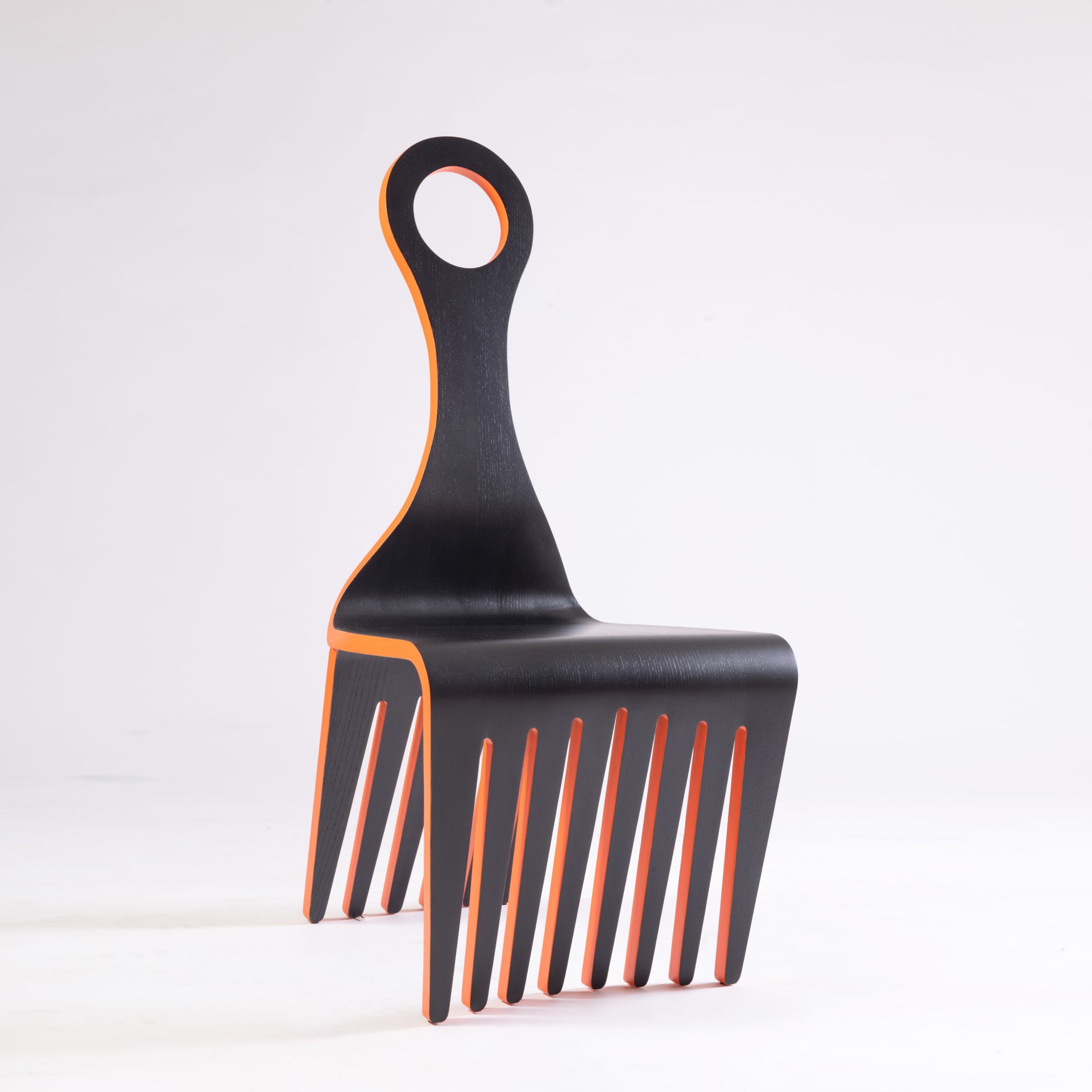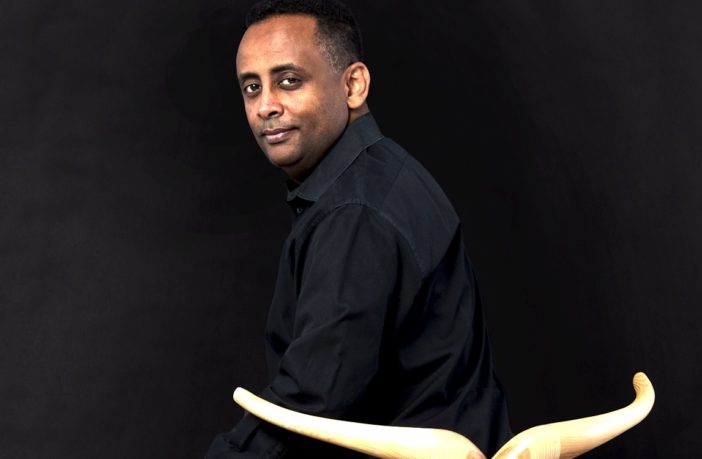If you carefully watch the Talokan underwater village scenes in Black Panther: Wakanda Forever, you’ll see Jomo Tariku’s work. The Ethiopian furniture designer provided his Boraatii adjustable stools that were used in the dome structure. “I had to quickly crank those out, and I actually had a day job. So at night, I had to assemble, glue, sand and ship it out for them.” In total, five of Tariku’s afrofuturist designs, including his Nyala Chair, are featured in the movie.
Tariku discovered his love of design as a kid in the most mundane of ways. “I was born in Kenya and grew up in Ethiopia, and I was always doing sketches, mostly out of boredom,” he tells EBONY. “I tended to sketch objects that were in front of me in our living room.” His father, a civil servant, had filled the space with treasures gifted from his trips to other countries. “It was a pretty eclectic setting in our living room,” Tariku shares. “We had a mid-century furniture piece from Norway, hand-carved tables and sofas from Indonesia, rugs from Persia and Iran.” There was also a collection of intricately carved cigar boxes. After spending a summer working in a small wood shop as a teen, Tariku headed to the U.S. to continue his studies at the University of Kansas. “I was introduced to industrial design and realized this is within my realm of what I want to do.” His college thesis was developing a contemporary line of African furniture based on his heritage.
Nyla Chair, ash wood, finished in black with white acrylic detailing, Jomo Tariku, 2022. Image: Julia Lehman photography.
From the beginning, Tariku’s work was inspired by his home continent. “It could be a hairstyle, houseware, architecture, colors, wildlife, the landscape. I wanted to keep within the scope of Africa and develop a catalog of ideas based on that,” he reveals. “It was a matter of creating a new design language that also incorporates what has already existed and what our ancestors have done.”
 Meedo Chair, ash black with orange edge trim, Jomo Tariku, 2022. Image: Julia Lehman photography.
Meedo Chair, ash black with orange edge trim, Jomo Tariku, 2022. Image: Julia Lehman photography.
One of his most arresting designs is the Meedo Chair, which resembles a hair pick. “Like most African things it has a dual meaning because the Afro hair pick in the late 1960s and early ’70s was a sign of Black is beautiful, that it’s okay for us to keep natural hair and it should be accepted,” Tariku says. As a symbol of the Civil Rights movement and popularized by Black film actors of the seventies like Richard Roundtree, “it’s an amalgamation of all those ideas into this chair.” Tariku proposed the design to New York’s Metropolitan Museum of Art, which unbeknownst to him, was putting together an exhibit based on Seneca village, the first Black settlement in New York City, which is now part of Central Park. “During the archeological digs, they found combs, so this whole thing just lined up perfectly.”
It’s an important step in recognizing African and designers of color, but Tariku declares that a lot more still needs to be done. “All these movements are happening within design, but our thinking and approach are rarely part of the dialogue,” he declares. “Maybe every five years, there will be a major design event related to Africa or the Caribbean and Latin America. And then we’re not heard about for another five. You cannot keep saying design is a global language, and you’re missing half of the world.”
That includes the work of fellow African designers who are continuing the tradition of making things out of found objects and resources within their reach. “I’ve been having a great dialogue with Hamed Ouattara from Burkina Faso who does these amazing furniture pieces from metal barrels that get trashed after use.” That’s not to imply that Africans are poor and can only make furniture pieces out of recycled material, Tariku stresses. “As an industrial designer, I don’t like waste. The way we design and produce the items that I do are as efficient and maybe even more efficient than most of these large manufacturing practices in the U.S. For the height adjustable stools seen in Wakanda Forever, we use pins which are made from wood left over from other projects.”
As co-founder of the Black artists + Designers Guild, Tariku is committed to getting African and Black design voices heard. “We’re making sure works of Black artists and designers are part of art and design shows and panel discussions. By inviting more of us to speak and present our work and ideas, I really believe you can change the design canon, where the next major publication that ends up on a library shelf and the book you’re using for your design thesis has our points of view. I’m seeing my work in museums and it’s great to have this now. But there are other designers whose works never made it there. Their sacrifice got me to this point. And hopefully, the next generation will remember what we do now is what will allow them to do things straight out of college, it won’t take 30 years to get there.”
Tariku’s African-inspired chair designs are exclusively available through Wexler Gallery. You can see the Meedo Chair at the Metropolitan Museum of Art, currently on display.



